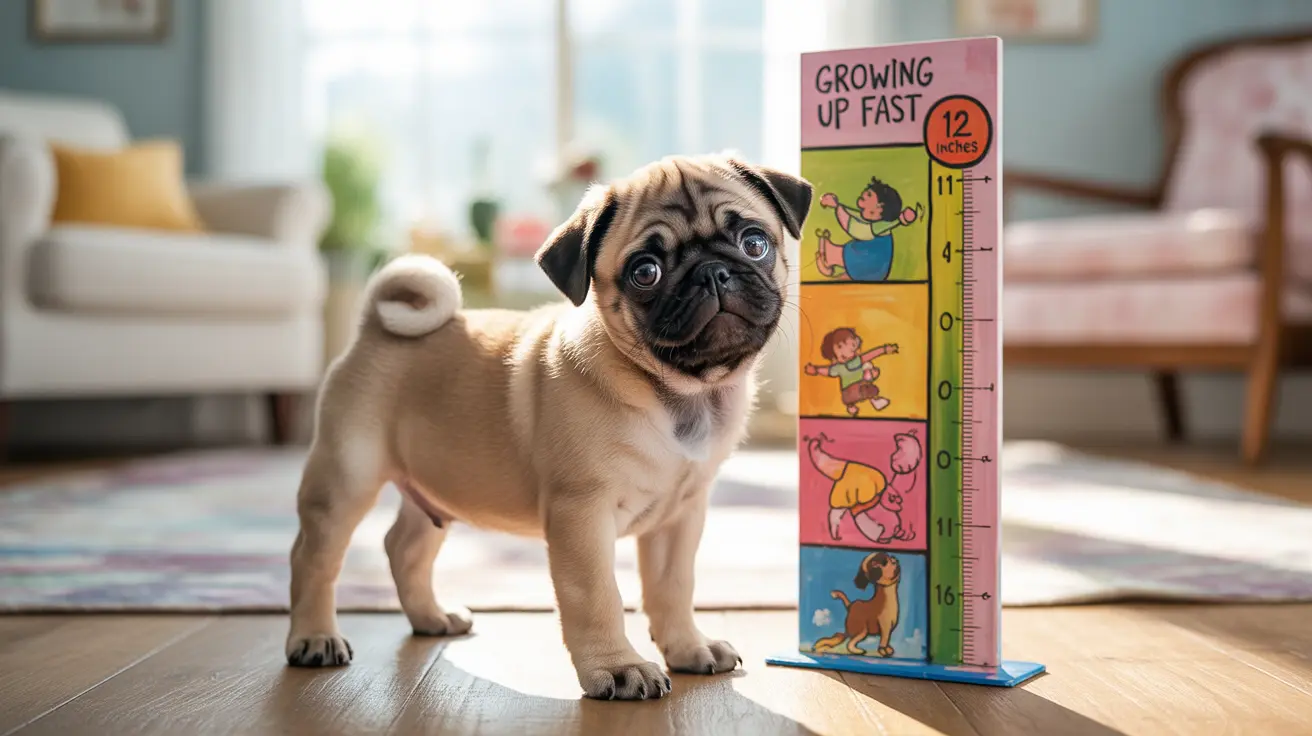Understanding Pug Growth Patterns
If you're a pug parent or considering bringing one of these charming companions into your home, understanding when pugs stop growing is crucial for ensuring proper care and development. These compact, affectionate dogs follow a unique growth pattern that differs significantly from larger breeds.
Pugs typically complete most of their physical growth between 9 and 12 months of age, though some may continue filling out with muscle mass until they reach 18 months. This relatively quick maturation process is characteristic of smaller dog breeds and requires careful attention to nutrition and health during their crucial development stages.
The Pug Growth Timeline
Birth to 3 Months
Pug puppies experience their most rapid growth during the first few months of life. During this period, they may double or even triple their birth weight, spending up to 22 hours a day sleeping to support this intensive growth phase. By three months, most pug puppies weigh between 3 and 5 pounds.
3 to 6 Months
This period marks significant developmental milestones, including teething and the onset of puberty. Pugs typically reach about half their adult weight during this time, weighing between 7 and 12 pounds by the six-month mark. Their height also increases steadily, approaching their adult shoulder height of 10 to 13 inches.
6 to 12 Months
Growth begins to slow during this phase, with most pugs reaching 90% of their adult height and about 80% of their final weight by their first birthday. The average adult pug typically weighs between 14 and 18 pounds, though some may reach up to 20 pounds while remaining healthy.
Factors Affecting Pug Growth
Genetics
The size of a pug's parents is the strongest predictor of their adult size. Genetics determine not only final size but also the rate at which a pug grows and develops.
Nutrition and Diet
Proper nutrition during growth phases is critical. A balanced, high-quality puppy food formulated for small breeds helps ensure healthy development without promoting excessive weight gain, which pugs are prone to experience.
Health and Environmental Factors
Overall health, stress levels, and living conditions can impact growth. Regular veterinary check-ups help monitor development and address any concerns early on.
Supporting Healthy Pug Development
Exercise and Activity
While pugs don't require extensive exercise, regular moderate activity helps maintain healthy weight and muscle development during growth phases. However, avoid overexertion, especially in hot weather, due to their brachycephalic (flat-faced) nature.
Weight Management
Monitoring your pug's weight throughout development is crucial, as obesity can mask normal growth patterns and lead to health issues. Use a growth chart and regular weigh-ins to track progress.
Frequently Asked Questions
When do pugs typically stop growing in height and weight?
Pugs typically stop growing in height between 9-12 months of age, though they may continue to fill out with muscle mass until 18 months.
How large do adult pugs usually get in terms of height and weight?
Adult pugs generally stand 10-13 inches at the shoulder and weigh between 14-18 pounds, though healthy weights up to 20 pounds are possible.
What factors affect a pug's final size and growth rate?
Genetics, nutrition, overall health, and environmental factors all play crucial roles in determining a pug's final size and growth rate.
How can I help prevent obesity while my pug is growing?
Measure food portions carefully, limit treats, provide regular exercise, and monitor weight monthly. Consult your veterinarian for specific feeding guidelines.
Does early spaying or neutering impact a pug's growth and size?
Early sterilization can affect bone growth plate closure. Discuss optimal timing with your veterinarian to balance health benefits with developmental needs.
Conclusion
Understanding when pugs stop growing helps owners provide the best care during crucial development stages. While most pugs complete their primary growth by one year, continuing to monitor their health and weight throughout their lives ensures they maintain optimal wellness well into adulthood.






